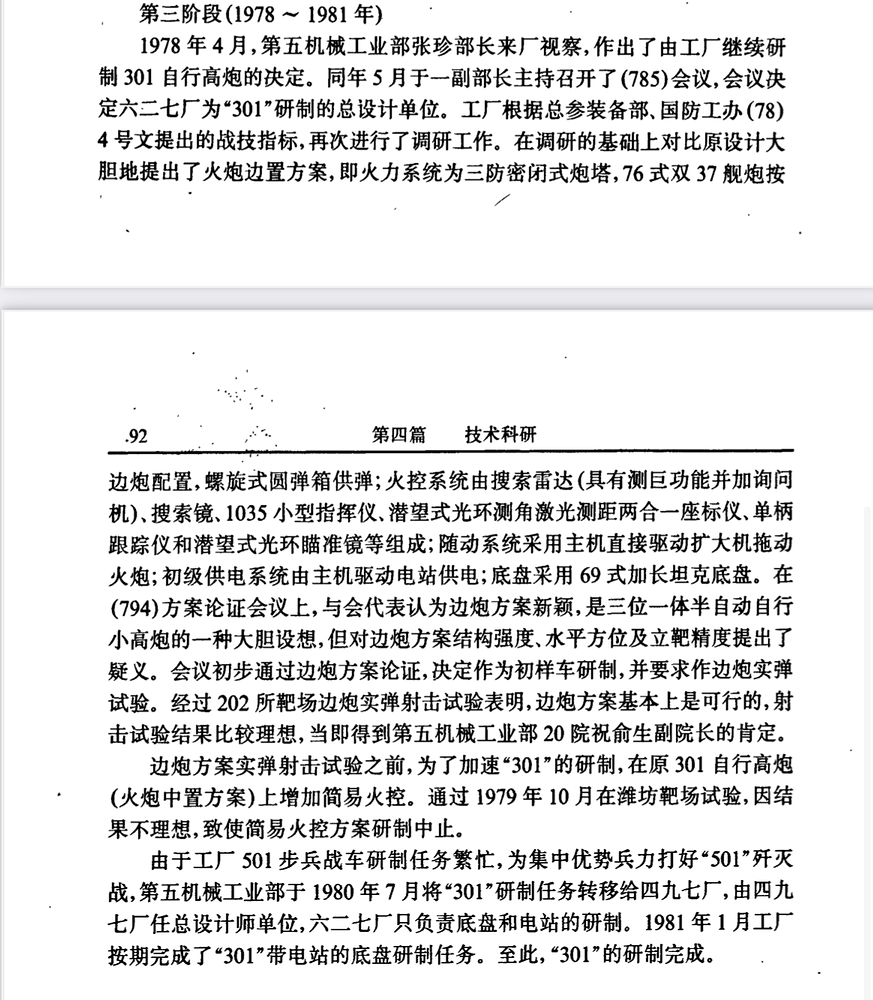6.7
301 Self-Propelled Anti-Aircraft Vehicle (1971-1976)
Spoiler
The chassis was based on the lengthened and modified Type 62 tank chassis, with a weapon system comprising twin-mounted 37mm anti-aircraft guns.

7.0
PGZ-80 Experimental Vehicle (321 Universal Chassis)
Spoiler
The chassis is based on the Type 321 Universal Chassis, turret from the PGZ-80 (WZ305) self-propelled anti-aircraft gun system and armed with a 57mm anti-aircraft gun.




PGZ-88 Experimental Vehicle
Spoiler

7.3
Type 301 Self-Propelled Anti-Aircraft Vehicle (1978-1981)
Spoiler
The chassis utilized a lengthened Type 69 tank chassis, with the turret converted to an NBC-sealed enclosed configuration. The weapon system consisted of naval-origin twin 37mm Type 76 anti-aircraft guns fed by a helical ammunition drum feeding system. The fire control system (FCS) integrated:
Search radar with integrated rangefinder and IFF interrogator
Optical search sight
Type 1035 compact fire control computer
Periscopic graticule angle measurement/laser rangefinder coordinate unit
Single-axis tracking mechanism
Periscopic graticule sighting system
(most components remained non-operational)
To accelerate development of the “301” project, engineers retrofitted a simplified fire control suite onto the original Type 301 SPAAG (central gun configuration prototype). This modified system conducted trial tests at Weifang Proving Ground in October 1979.




8.0
PGZ-95 (IRGM-deprived Variant)
Spoiler
The PGZ-95 system was not equipped with HN-5 (Hongying) or QW-1 (Qianwei) man-portable air-defense missiles (MANPADS), and crucially failed to integrate any missile systems into its fire control architecture.Supplement to Chinese 8.0 Radar Air Defense Systems

8.3
PGZ-12
Spoiler
With the PGZ-09’s BR increase from 8.3 to 8.7, the Chinese tech tree requires a new air defense vehicle to maintain mid-tier viability. The PGZ-12 – featuring a 35mm revolver cannon (no AA missiles), 1,000 RPM fire rate, and unmanned turret – would optimally occupy BR 8.3. This system saw limited deployment with Chinese Rapid Reaction Forces




9.0
PGZ-88
Spoiler
The PGZ-88 integrated the naval-origin Type 76 twin 37mm anti-aircraft gun system and its associated radar fire control components onto a modified Type 79 Main Battle Tank (MBT) chassis. Key modifications included the installation of a transmission assembly from the Type 73 Armored Recovery Vehicle. The vehicle employed a two-dimensional search radar to provide azimuth targeting data for the guns, which could also collaborate with an electro-optical coordinate system for rangefinding. It was equipped with proximity-fuzed ammunition for enhanced aerial interception capabilities.








